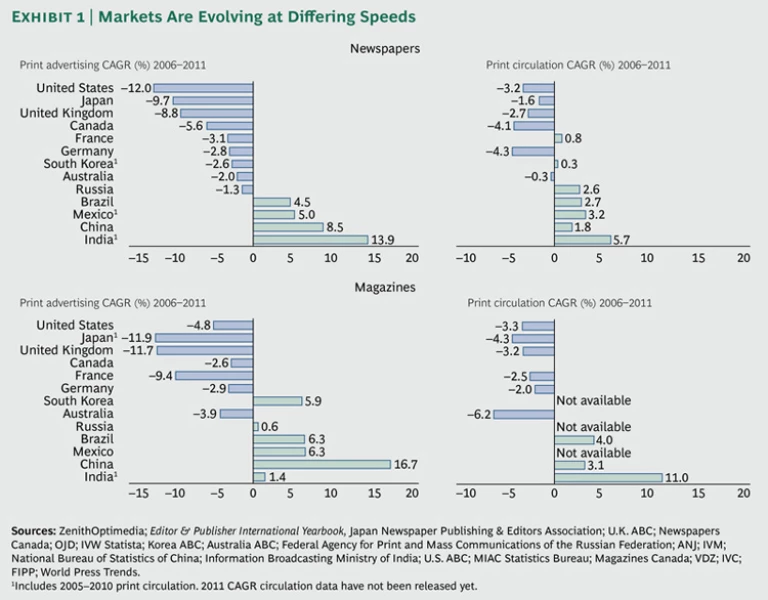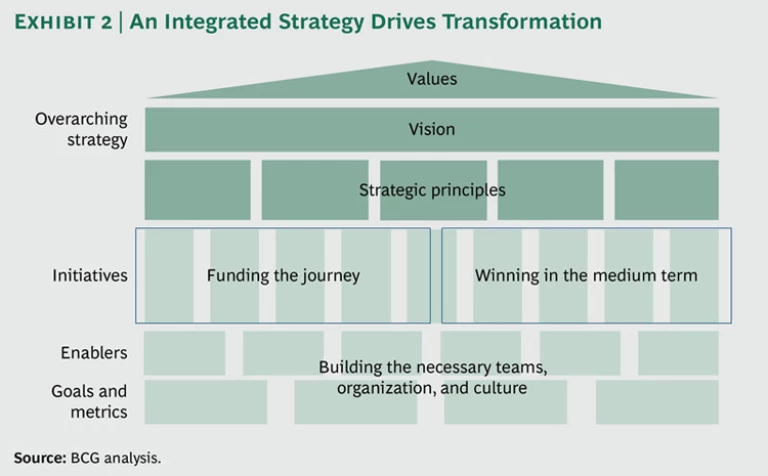Conventional wisdom says newspaper and magazine publishing is a dying business. Based on our work with print media companies in North and South America, Europe, and Asia, we believe that the conventional wisdom is wrong.
In most countries, print media companies continue to have commanding brands and strong consumer relationships. In developing economies, they are still growing, as incomes and education levels rise. (See Exhibit 1.) Some print-media companies in developed countries continue to generate enviable cash flows. At the same time, there is no question that demographic evolution, technological revolution, and changing preferences for how people consume media have made deep inroads into circulation and advertising.
Most companies have responded predictably and appropriately by cutting costs, but this is only a short-term and, ultimately, an inadequate fix. Some have attempted to transform their businesses and organizations for the digital age, but they have had a hard time hurdling a very high bar—managing short-term performance in order to meet shareholder expectations while also putting in place the longer-term initiatives that will generate growth in revenues and earnings for the future.
Transformation means enduring change. Transformation for print media companies means a complete overhaul in how they think, plan, operate, and define success in virtually every aspect of their business. The critical question facing newspaper and magazine publishers, including those in countries where the transition to digital is still in its infancy, is this: how do they balance the twin goals of maintaining short-term performance while planning and executing a long-term vision for a very different future, given that legacy businesses still drive the majority of revenues? How do they buy time from investors as they adapt to the realities of a perpetually changing marketplace?
This report provides an answer. It is not a silver-bullet solution—there are none of those, of course. It is not easy, it is not quick, and, importantly, it is not about trading print dollars for digital pennies. The companies we have worked with have found transformation time consuming, complicated, and often frustrating, made all the more so in a world characterized by continuing uncertainty. Success depends more on execution than insight, and the time frame required is likely to be three to five years, although we also argue that it is essential to show measureable progress much more quickly than that.
As our report on leading transformations and driving organizational change sets out, there are three interconnected steps: funding the journey, winning in the medium term, and building the right team, organization, and culture. Success in each step depends on the others: you can’t win without funding, and you are unlikely to get the time necessary to build the team and organization without notching some early wins. (See Exhibit 2.)
This report discusses how to execute each step of the transformation, including the importance of developing an overarching strategy to serve as its guide and demonstrating success at each stage—as well as maintaining the effort, energy, attention, sequencing, and focus on execution needed to pull it off.











